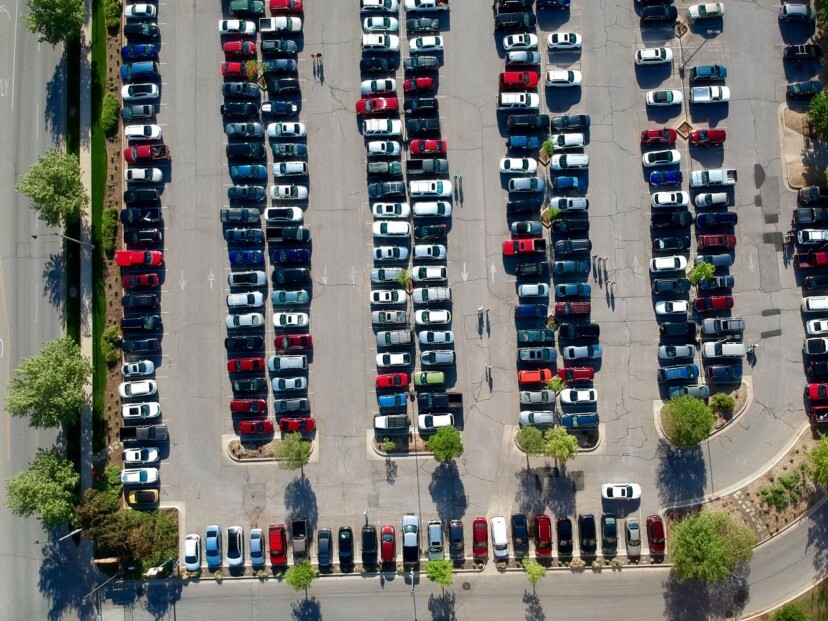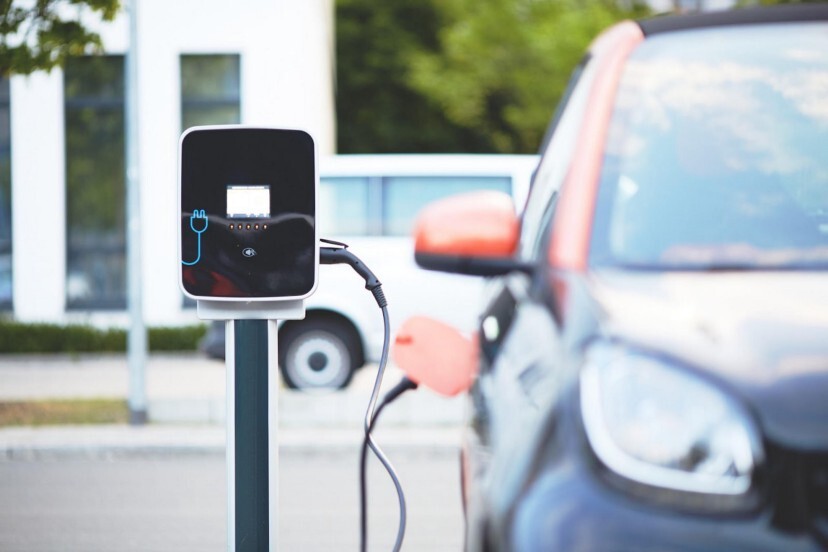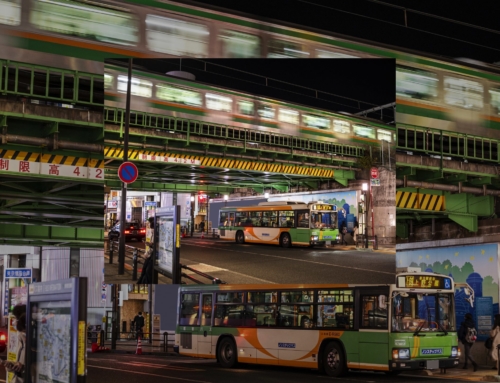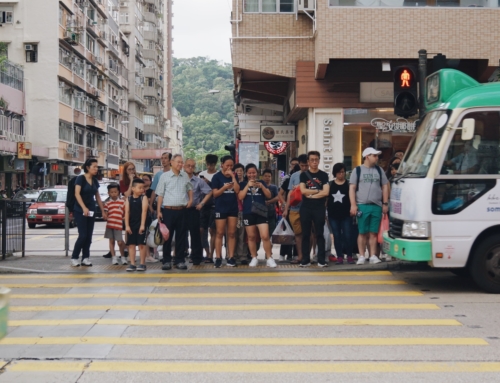Why is finding parking in Malaysia still so difficult?
As we have argued in our previous article, the lack of information for consumers stands as the core challenge to a better parking experience.
Put simply, before arriving at our destination, we do not know if there are parking lots nearby; if there are nearby parking lots, we do not know how many spaces are available in them; and if there are available spaces, we do not know the exact location of the free space and how to get to it.
So are there solutions to these challenges?

A glimpse of the future
Consider a smart city system where public streetside parking occupancy detection is fully connected with the Internet.
In real-time, one can reliably view available streetside parking spaces, their municipal parking rates, and have the ability to reserve these spaces ahead of arrival, all through an app or a webpage.
How does this vision benefit our community?
From a municipal perspective, officials can unlock a treasure trove of data, which offers them insights on metrics such as parking demand, turnover rates, peak hours, average vehicle duration on site, to name a few. Such data points enable them to create processes to direct traffic flow, thereby reducing congestion and managing spaces more efficiently.
Most importantly, municipal officials can utilise advanced technologies to enforce parking policies more efficiently. For instance, they can ensure that vehicles do not overstay their allotted parking duration and that those who do will be summoned automatically. This ensures parking usage is optimised and revenue is collected efficiently.
An integrated parking system also offers convenience to drivers as they are able to locate and reserve parking spaces. This guarantees them a parking spot in busy locations, saving them from the frustrations of having to waste time parking their cars.
With integrated payment systems like e-wallets or RFID tags in place, drivers gain from being able to pay parking fees in a hassle-free manner, which promotes a culture of accountability and social responsibility.
Connecting parking spaces to the Internet will also promote park-and-ride facilities, thereby encouraging the uptake of multimodal transportation — the use of various modes of transportation to complete one’s journey. Commuters can gain from packages that bundle parking and public transport passes at a discounted price.
With the parking spaces reserved through the bundles, the estimated time of arrival (ETA) of such multimodal journeys can be more reliable compared with commuters driving private vehicles and getting stuck in city traffic and in parking lots.
Meanwhile, drivers of electric cars, who are characteristically more conscious about sustainability, will be on the lookout for multimodal journeys. So it makes sense to upgrade these to park-charge-and-ride facilities to become mobility hubs.
All the aforementioned means that there is a need to rethink our existing hubs to form mobility hubs. This means co-locating public and shared mobility modes, providing digital information for multimodal journeys, as well as building safer, more accessible, and sustainable spaces.

Basic building blocks
To make this vision work, certain technologies need to be in place to enable smart streetside parking.
The first of which is a networking layer, which comes in the form of 5G technology as it can bring extremely low latency, greater capacity, and increased speeds. This means that large amounts of data can be collected and transmitted over shorter time periods.
Next up are the devices that make them work. The Internet of Things (IoT) revolution means that many low-cost sensors or devices can be directly integrated to the Internet, making instant communication through the web possible.
These devices are either short or long range sensors. The former includes magnetic, ultrasonic sensors and infrared sensors. Due to their relatively lower cost, these can be embedded in the ground where public parking spaces are or suspended above vehicles.
Long range sensors include those that can cover large areas and are able to distinguish vehicles from non-vehicles. These include high-definition (HD) cameras, radars and LiDARs (Light Detection And Ranging). Typically they are mounted on high vantage points and integrated with computer vision analytics software paired with detection algorithms.
Both types of sensors can be fitted with GPS trackers and IoT edge devices, allowing them to connect to the Internet and accurately report their locations and the status of streetside parking space occupancy.
Underpinning all these is the development of machine learning and artificial intelligence. These technologies mean that applications can outperform and replace humans, resulting in more efficient and “always on” capabilities. Connecting this system to the smartphone, which gives consumers access to the Internet at all times.
The nexus of these technologies allow a platform which can connect all Internet-enabled devices together, interact with cloud infrastructure in a real-time manner and build databases that can be analysed automatically using machine intelligence.
What’s the situation in Malaysia?
While ubiquitous streetside parking detection is still a ways off, municipalities in Malaysia have implemented some basic smart streetside parking solutions.
The most common solution right now is the ability to pay municipal parking fees on a smartphone app. Most state municipal councils, such as in Kuala Lumpur, Selangor, Johor Bahru, Malacca and Penang, have implemented smart parking apps to allow users to pay parking fees by e-wallets or by credit cards.
Some apps such as FlexiParking and Selangor Smart Parking have also been deployed, giving users alerts when the parking time is about to expire and comes with the ability to settle summonses or compounds directly through the app. Meanwhile, MCash and Touch ‘n Go are e-wallet platforms that support municipal parking payments.
As for parking detection sensors, Penang Smart Parking administered by the Penang State Government, has installed 36,000 IoT-enabled smart parking sensors on public streetside parking for reporting parking availability.
Next steps for Malaysia
Malaysia needs to embrace radical changes in the way it approaches transit challenges. Severe traffic congestion, urban sprawl, the lack of first/last mile connectivity, and public transportation breakdowns, severe parking challenges, as well as natural disasters such as flash floods necessitate a paradigm shift.
The key to this is to harness data from the vast variety of transit systems and use this data to engineer better solutions for both transit and parking.
At Asia Mobiliti, we are doing just that. We strive to use data more intelligently as exemplified by a research and development (R&D) joint project with Monash University Malaysia to develop a solution using LiDAR sensors.
A single LiDAR sensor can detect a wide range of vehicles and when coupled with connectivity to the Internet, the solution can harness the data that includes parking availability, wayfinding, duration spent by the car. Connect this to a web-based architecture and we can enable the smart parking vision explained in this article.
Coupled with our other mobility solutions, such as Demand-Responsive Transit, we will be able to offer seamless journeys for drivers and encourage multimodal transit in our daily commute.
Share This Story!
RELATED POSTS
Why is finding parking in Malaysia still so difficult?
As we have argued in our previous article, the lack of information for consumers stands as the core challenge to a better parking experience.
Put simply, before arriving at our destination, we do not know if there are parking lots nearby; if there are nearby parking lots, we do not know how many spaces are available in them; and if there are available spaces, we do not know the exact location of the free space and how to get to it.
So are there solutions to these challenges?

A glimpse of the future
Consider a smart city system where public streetside parking occupancy detection is fully connected with the Internet.
In real-time, one can reliably view available streetside parking spaces, their municipal parking rates, and have the ability to reserve these spaces ahead of arrival, all through an app or a webpage.
How does this vision benefit our community?
From a municipal perspective, officials can unlock a treasure trove of data, which offers them insights on metrics such as parking demand, turnover rates, peak hours, average vehicle duration on site, to name a few. Such data points enable them to create processes to direct traffic flow, thereby reducing congestion and managing spaces more efficiently.
Most importantly, municipal officials can utilise advanced technologies to enforce parking policies more efficiently. For instance, they can ensure that vehicles do not overstay their allotted parking duration and that those who do will be summoned automatically. This ensures parking usage is optimised and revenue is collected efficiently.
An integrated parking system also offers convenience to drivers as they are able to locate and reserve parking spaces. This guarantees them a parking spot in busy locations, saving them from the frustrations of having to waste time parking their cars.
With integrated payment systems like e-wallets or RFID tags in place, drivers gain from being able to pay parking fees in a hassle-free manner, which promotes a culture of accountability and social responsibility.
Connecting parking spaces to the Internet will also promote park-and-ride facilities, thereby encouraging the uptake of multimodal transportation — the use of various modes of transportation to complete one’s journey. Commuters can gain from packages that bundle parking and public transport passes at a discounted price.
With the parking spaces reserved through the bundles, the estimated time of arrival (ETA) of such multimodal journeys can be more reliable compared with commuters driving private vehicles and getting stuck in city traffic and in parking lots.
Meanwhile, drivers of electric cars, who are characteristically more conscious about sustainability, will be on the lookout for multimodal journeys. So it makes sense to upgrade these to park-charge-and-ride facilities to become mobility hubs.
All the aforementioned means that there is a need to rethink our existing hubs to form mobility hubs. This means co-locating public and shared mobility modes, providing digital information for multimodal journeys, as well as building safer, more accessible, and sustainable spaces.

Basic building blocks
To make this vision work, certain technologies need to be in place to enable smart streetside parking.
The first of which is a networking layer, which comes in the form of 5G technology as it can bring extremely low latency, greater capacity, and increased speeds. This means that large amounts of data can be collected and transmitted over shorter time periods.
Next up are the devices that make them work. The Internet of Things (IoT) revolution means that many low-cost sensors or devices can be directly integrated to the Internet, making instant communication through the web possible.
These devices are either short or long range sensors. The former includes magnetic, ultrasonic sensors and infrared sensors. Due to their relatively lower cost, these can be embedded in the ground where public parking spaces are or suspended above vehicles.
Long range sensors include those that can cover large areas and are able to distinguish vehicles from non-vehicles. These include high-definition (HD) cameras, radars and LiDARs (Light Detection And Ranging). Typically they are mounted on high vantage points and integrated with computer vision analytics software paired with detection algorithms.
Both types of sensors can be fitted with GPS trackers and IoT edge devices, allowing them to connect to the Internet and accurately report their locations and the status of streetside parking space occupancy.
Underpinning all these is the development of machine learning and artificial intelligence. These technologies mean that applications can outperform and replace humans, resulting in more efficient and “always on” capabilities. Connecting this system to the smartphone, which gives consumers access to the Internet at all times.
The nexus of these technologies allow a platform which can connect all Internet-enabled devices together, interact with cloud infrastructure in a real-time manner and build databases that can be analysed automatically using machine intelligence.
What’s the situation in Malaysia?
While ubiquitous streetside parking detection is still a ways off, municipalities in Malaysia have implemented some basic smart streetside parking solutions.
The most common solution right now is the ability to pay municipal parking fees on a smartphone app. Most state municipal councils, such as in Kuala Lumpur, Selangor, Johor Bahru, Malacca and Penang, have implemented smart parking apps to allow users to pay parking fees by e-wallets or by credit cards.
Some apps such as FlexiParking and Selangor Smart Parking have also been deployed, giving users alerts when the parking time is about to expire and comes with the ability to settle summonses or compounds directly through the app. Meanwhile, MCash and Touch ‘n Go are e-wallet platforms that support municipal parking payments.
As for parking detection sensors, Penang Smart Parking administered by the Penang State Government, has installed 36,000 IoT-enabled smart parking sensors on public streetside parking for reporting parking availability.
Next steps for Malaysia
Malaysia needs to embrace radical changes in the way it approaches transit challenges. Severe traffic congestion, urban sprawl, the lack of first/last mile connectivity, and public transportation breakdowns, severe parking challenges, as well as natural disasters such as flash floods necessitate a paradigm shift.
The key to this is to harness data from the vast variety of transit systems and use this data to engineer better solutions for both transit and parking.
At Asia Mobiliti, we are doing just that. We strive to use data more intelligently as exemplified by a research and development (R&D) joint project with Monash University Malaysia to develop a solution using LiDAR sensors.
A single LiDAR sensor can detect a wide range of vehicles and when coupled with connectivity to the Internet, the solution can harness the data that includes parking availability, wayfinding, duration spent by the car. Connect this to a web-based architecture and we can enable the smart parking vision explained in this article.
Coupled with our other mobility solutions, such as Demand-Responsive Transit, we will be able to offer seamless journeys for drivers and encourage multimodal transit in our daily commute.



